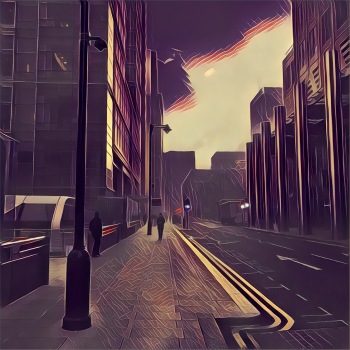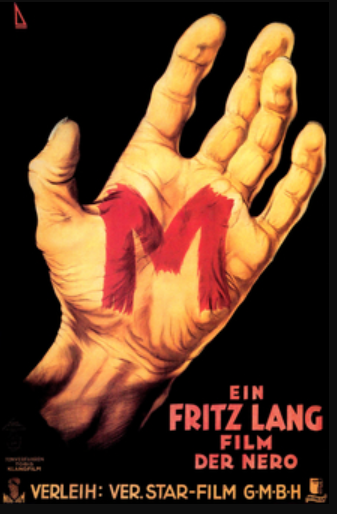“I… I can’t help myself! I have no control over this, this evil thing inside of me, the fire, the voices, the torment!”
**Possible spoiler alert**
The tracking of criminals, analysing their psychologies and the thrill of the pursuit has been a mainstay of cinema for decades now. A great deal of film has been produced about this topic and it is an aspect of society which continues to thrill and provides much morbid curiosity to an audience whose thirst is barely slaked for such content.
In the past few decades movies like Manhunter, Silence of the lambs, Se7en, Prisoners and Netflix documentaries continue to whet the appetites of the public. The horrors of real life serial killers have had a great influence on fictional portrayals and have provided much food for thought for cinematic visions.
To find the roots of this genre we can turn to the German Expressionist works of Fritz Lang and more specifically the 1930 produced movie “M”. “M” takes place during the Weimar Republic – that time of great social turmoil and depression in Germany. Against this backdrop, there is a serial killer stalking the streets of Berlin, kidnapping and killing young girls. The city is on edge, mothers are terrified of letting their children go out during daylight hours and live in constant fear of this human demon whose actions are barely comprehensible in such a conservative society.
There are a multitude of forces in the city who are gathered together to find a solution to this problem. The police and even the local gangsters are involved in searching for this man. An interesting dual narrative involves both the police and the vigilantes in their seperate missions to locate the killer.
“M” consists of many scenes which were novel at the time but have become common in today’s police thriller movies. We have many scenes of professional lawmen sitting in rooms anxiously smoking endless cigarettes whilst exchanging information about the killer. There are scenes of police officers searching homes, looking for clues and researching possible evidence. Arranged stings and stakeouts, city dwellers nervously talking about the killer and how to live their day to day lives under this terrifying shadow. The movie heads towards a final climactic reveal of such pathos and catharsis viewers are left transfixed and haunted.
The culmination results in a kangaroo court for the killer. M finally caught and exhausted erupts with a cry for the ages declaiming his horrifying actions on a pressing internal urge to act out on powers he cannot control.
“It’s there all the time, driving me out to wander the streets, following me, silently, but I can feel it there. It’s me, pursuing myself! I want to escape, to escape from myself! But it’s impossible. I can’t escape, I have to obey it. I have to run, run… endless streets. I want to escape, to get away!… But who will believe me? Who knows what it’s like to be me? How I’m forced to act… how I must, must… don’t want to, must! Don’t want to, but must! And then a voice screams! I can’t bear to hear it! I can’t go on! I can’t… I can’t…“
The speech was considered ground-breaking for film-goers of the time in it’s refusal to indulge in the religious labelling of a man as being simply evil. Instead we are shown a man wrestling which internalised mental horrors, unequipped to deal with the battle and forced to carry out brutal attacks to appease his illness and afterwards not even capable of remembering the actions he’s done. This was probably one of the first few times that such outcasted criminals were shown as victims of mental illnesses rather that those absent of God’s grace.
The imagery and scenery in the movie showcases Lang’s German expressionistic artistry. The buildings, tenement, street and office shots showcase a claustrophobic environment which adds to the oppressive atmosphere in which the killer is operating. The darkened streets are the jungle in which he conducts his heinous acts and provide the perfect cover. There is also a leitmotif whistled throughout – “In the hall of the mountain king” which subtly accentuates the madness in which M operates. The imagery and atmosphere being strove for is one of fear and terror within a civilian setting. The stark underground kangaroo court of M also represents social justice at its most primitive.
Even in 2024 one is somewhat amazed at how modern “M” runs and feels. It has all of the hallmarks of a modern day police thriller – a serial killer on the loose, police and society in a state of panic racing against the clock to locate him before further murders are conducted, a series of traps laid down to find him followed by a somewhat satisfying cathartic reveal of the serial killer. The editing and pace is sophisticated and manages to keep you drawn for most of the movie (the third quarter of the movie does enter a lull for a moment) for picking up for the denouement.
“M” is a haunting and powerful look at a city held hostage by the worst of people. It’s artistic vision is matched by brooding though humane portrayals of individuals outcaste by society wrestling with their own horrifying behaviour. It sowed the seeds for later portrayals of a genre which quite often can delve into the lurid and the sensationalist. A look at the origins of the genre, however, you’ll find a nuanced piece of art which illuminates as well as terrifies when it comes to exploring a side to the human condition many would avoid.


